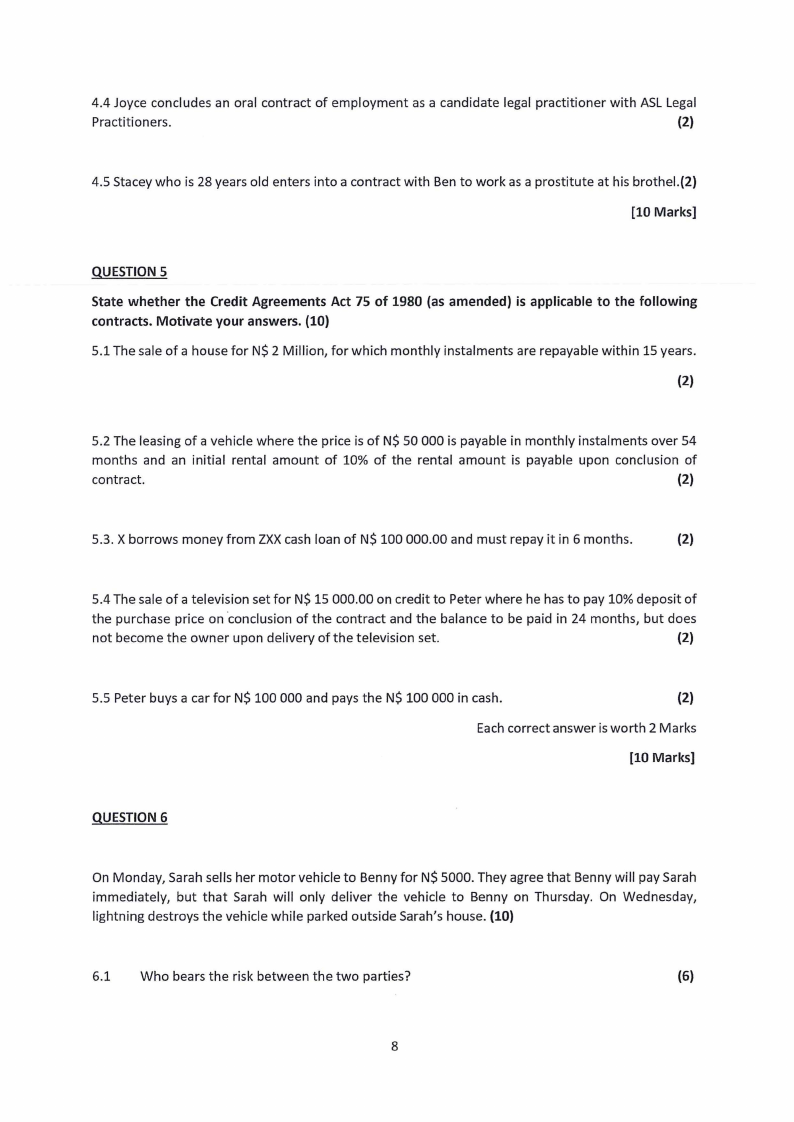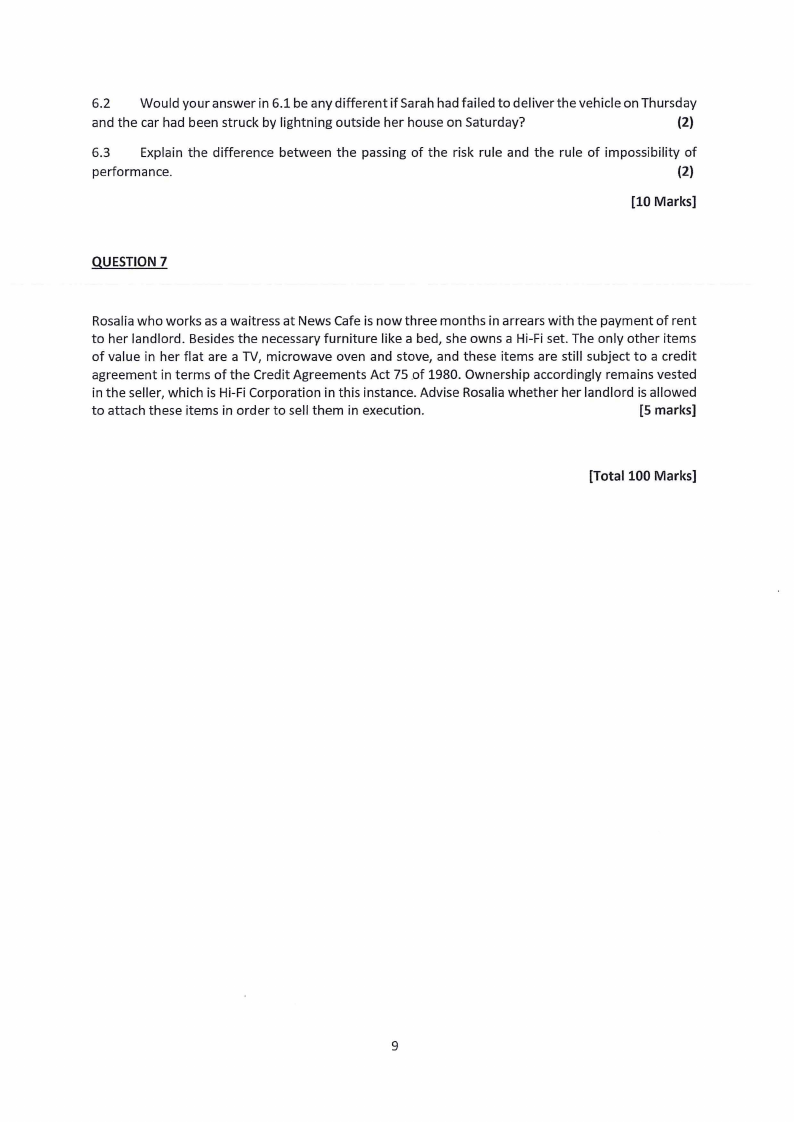
E. Neither one of the above options.
1.6 One of the requirements for the transfer of ownership when a contract of sale has been entered
into, is (indicate the correct statement):
A. That the intention exists that ownership should pass
B. That the merx must be free from latent defects.
C. The actual delivery must take place.
D. That the purchase price must be paid in cash.
E. That the seller must give the purchaser a warranty against eviction.
1.7 The difference between emptio spei and emptio rei speratae can be explained as follows:
A. In both these types of contracts the merx is sold as a hope or expectation, which is expected
to come into existence in future.
B. In a contract of emptio spei the price will be paid per unit, while the price is fixed as a global
sum in emptio rei speratae.
C. In a contract of emptio spei the price will only be paid to the extent to which the future
expectation will materialize, while in a contract of emptio rei speratae the purchaser must pay
the price regardless of whether the expectation materializes or the extent to which it
materializes.
D. In a contract of emptio spei the price is fixed as a global sum, while the purchaser must pay
the price regardless of whether the expectation materializes or the extent to which it
materializes in a contract of emptio rei speratae.
E. In a contract of emptio spei, the purchaser must pay the price regardless of whether the
expectation materializes or the extent to which it materializes, while in a contract of emptio
rei speratae the price will only be paid to the extent to which the future expectation will
materialize.
1.8 With reference to the provisions of the Credit Agreement Act 75 of 1980, the following statement
is true?
A. A person may enter into an agreement in terms of which s/he is bound to enter into a credit
agreement at a future date.
B. The agreement must be concluded for at least 6 months or longer.
C. The credit grantor may lend money to the credit receiver to pay the deposit.
D. The credit grantor may not be exempted from liability for ex lege guarantees.
E. The credit grantor may be exempted from liability for patent defects.
1.9 In terms of Section 13 of the Credit Agreements Act 75 of 1980:
A. The Credit Agreement must contain a clause stating that the contract was signed at the
premises of the credit grantor.
B. The initial payment must first be paid before the credit agreement will be valid.
C. The credit receiver may not trade in goods as a deposit.
3
























